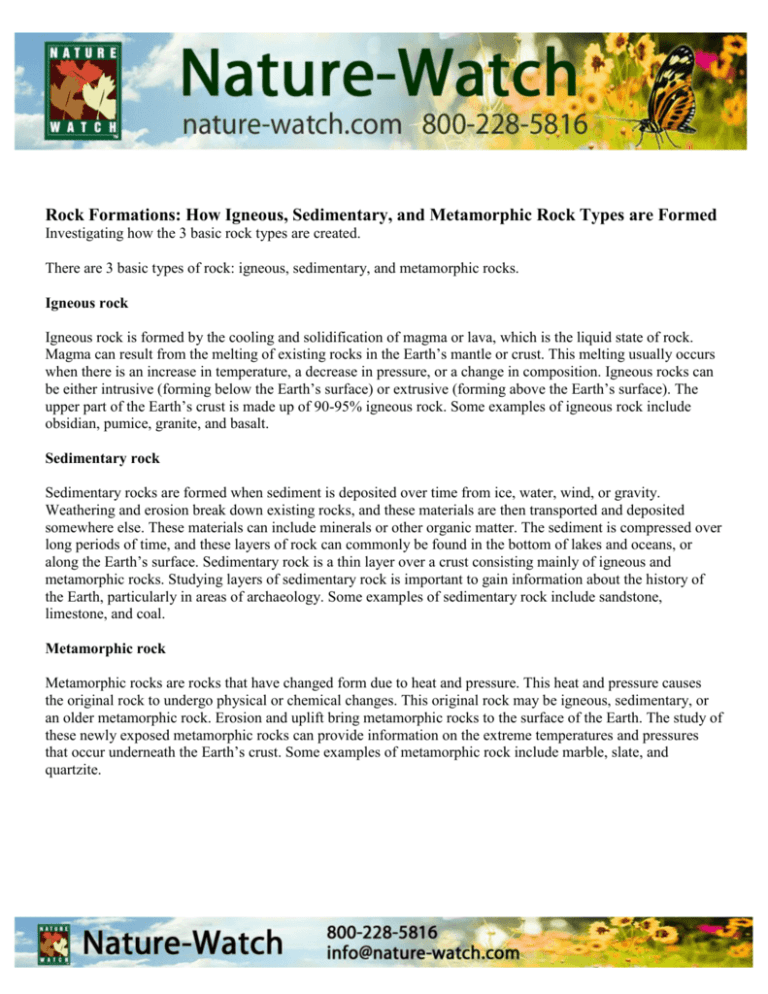Rock Formations: How Igneous, Sedimentary, and Metamorphic
advertisement

Rock Formations: How Igneous, Sedimentary, and Metamorphic Rock Types are Formed Investigating how the 3 basic rock types are created. There are 3 basic types of rock: igneous, sedimentary, and metamorphic rocks. Igneous rock Igneous rock is formed by the cooling and solidification of magma or lava, which is the liquid state of rock. Magma can result from the melting of existing rocks in the Earth’s mantle or crust. This melting usually occurs when there is an increase in temperature, a decrease in pressure, or a change in composition. Igneous rocks can be either intrusive (forming below the Earth’s surface) or extrusive (forming above the Earth’s surface). The upper part of the Earth’s crust is made up of 90-95% igneous rock. Some examples of igneous rock include obsidian, pumice, granite, and basalt. Sedimentary rock Sedimentary rocks are formed when sediment is deposited over time from ice, water, wind, or gravity. Weathering and erosion break down existing rocks, and these materials are then transported and deposited somewhere else. These materials can include minerals or other organic matter. The sediment is compressed over long periods of time, and these layers of rock can commonly be found in the bottom of lakes and oceans, or along the Earth’s surface. Sedimentary rock is a thin layer over a crust consisting mainly of igneous and metamorphic rocks. Studying layers of sedimentary rock is important to gain information about the history of the Earth, particularly in areas of archaeology. Some examples of sedimentary rock include sandstone, limestone, and coal. Metamorphic rock Metamorphic rocks are rocks that have changed form due to heat and pressure. This heat and pressure causes the original rock to undergo physical or chemical changes. This original rock may be igneous, sedimentary, or an older metamorphic rock. Erosion and uplift bring metamorphic rocks to the surface of the Earth. The study of these newly exposed metamorphic rocks can provide information on the extreme temperatures and pressures that occur underneath the Earth’s crust. Some examples of metamorphic rock include marble, slate, and quartzite.







